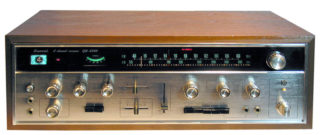3/21/2023 Update: QRXrestore is experiencing extremely high wait times- we are doing everything we can to move through everyone’s unit in a timely manner while giving them the full attention they deserve. We are a small team and so split our time between customer service and repairing units. Please accept our apologies for late replies to email inquiries, rest assured we are still working full time restoring these beautiful Sansuis.
For the first time since we started business nearly a decade ago, we have found it necessary to raise our prices. These new prices have been adjusted for inflation, and to reflect modern component and labor costs associated with each model we service. If you have a stereo in the shop, then the original price you were quoted is still accurate. Please contact us if you have any questions or concerns. Thank you. -Vintage Stereos
!!! Before sending your audio equipment in to be serviced please email us, fill out our Packing Slip, and read the How To Ship page. !!!
We work on gear in the order we receive it at the shop. Please note: cabinet refinishing may add up to 2 weeks to the restoration. Due to our refinishing shop raising their prices, we have had to raise the price of cabinet refinishing to $110. Veneer work on the cabinet may add up to 4 weeks to the process.
Sansui Restorations:
We originally started out just restoring the QRX9001/etc. series, but over the years we have been asked to restore most everything that Sansui has made before about 1980. At this point we have restored hundreds of Sansuis, and we know them, inside and out. We do about 150 restorations a year.
There are a lot of techs out there that don’t want to do restorations. They particularly don’t want to do recapping, I think mainly because they make mistakes and then have a whole new problem to trouble shoot.
It’s a shame, because repairing an old piece of Stereo gear without doing a recap/restore just means that more problems will appear soon. In addition to the repair, many parts should be replaced.
All these old Sansuis are almost 40 years old or more now. We don’t do repairs per se because with electronics this old, the customer will have another problem within a few months to a year, and it’s very upsetting when that happens, after paying shipping, and repair costs. It’s usually only a bit more to restore the whole thing, which is much better in the long run.
The thing about doing a restoration, is this… we don’t trouble shoot whatever is wrong with your Sansui, which can take hours to find the specific problem. We just jump in and first recap and then do all the other replacements, repairs and fixes we have learned for each model over the years. When we’re done with all that, 85% of the time, the original problem has just disappeared. So… we didn’t rack up a whole bunch of hours trying to find the problem, we spent that time instead renewing your unit, giving it a new lease on life. We expect, and our customers seem to be getting, many more years of like new performance.
Another thing… you think you know what your particular model Sansui sounds like, but in reality, you don’t, not really. What you are familiar with is the way it sounds after 40 years. It has steadily degraded in performance and sound quality from about the 15-20 year mark til now, and when renewed will stun you with the new, or likely better than new, sound and performance. We know this is true, because we constantly get emails and letters from our customers all the time, telling us just that.
We know what we’re doing, when it comes to these classic Sansuis. And we really do what we say we do, unlike a lot of shops that give you some song and dance and really don’t change out ALL the caps. Here’s our proof…
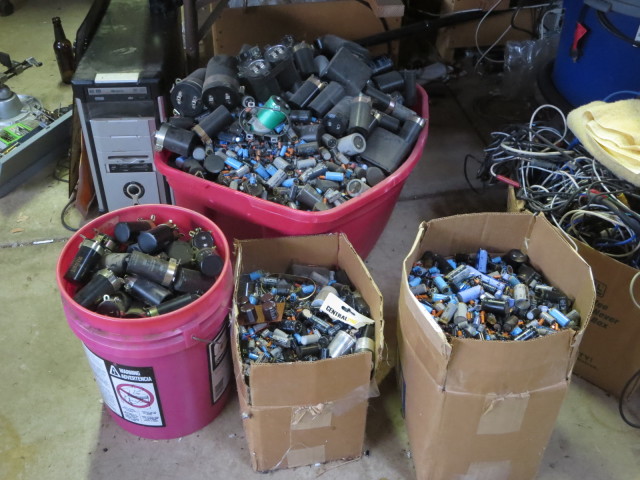
At least 250 lb of old electrolytic caps we have removed from hundreds of Sansuis that we have restored. Do we really replace all the caps? Yes we do.
Now available, Mylar Film caps from input to output
We have recently added something new to our restorations. It is the replacement of all coupling caps from input to output with Mylar film caps, as Sansui did on a few of it’s early amps. We will quote a price for this for each individual model. I suggest you go here and read all about this new addition to our services.
Services and Prices
descriptions below
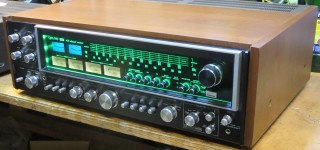 |
| Sansui QRX-9001, QRX-8001, QRX-999 recap/restore – $1870 |
These are the Holy Grail of quad. No other unit ever built in Japan comes close. With one of these restored and upgraded by us, a well set up system will literally shock audiophiles who may have a modern high end $25K stereo system at home. We’ve heard that story from our customers many many times. We have customers who say it’s like listening to their treasured recordings for the first time, it’s not speakers making sound, you are in the sound field, enveloped by the music and the reverberant field. With the improved quad alignments, normal stereo recordings are just as impressive. And this is from a receiver designed in 1976, with all analog processing. You have to hear it to understand. Read the website to see what we do to these old quads.
When we work on this series, we make extensive repairs to the F-2624 driver boards. We replace all fusible resistors, and modify the boards for increased bass response and lower noise. This series also gets an LED modification to the radio dial, voltage regulation for the quad processors. We bias and align the amplifier section and we tweak and align the quad processors for maximum performance. Popular modifications are listed below. If you want something specific, just ask. We’re happy to help!
upgrades/modifications:
Differential Amp Modification – $260
Mylar Capacitor Upgrade – $168
Wood Cabinet Refinishing – $145
Full LED Conversion – $115
 |
| Sansui QRX-7001, QRX-6001 recap/restore – $1280 |
These units have the same quad processing boards for Hall, Synth, QS, and SQ as the 8/9001. The CD4 processing is an earlier version, though. If you do not need CD4 and 25/35 watts per channel is enough, you can be very happy with one of these. The 7001 has some design errors in the output section that we correct, so the difference is pretty impressive.
upgrades/modifications:
Differential Amp Modification – $260
Mylar Capacitor Upgrade – $224
Wood Cabinet Refinishing – $145
Full LED Conversion – $115
|
|
| Early QRX models: Sansui QRX-4500, QRX-6500, QRX-5500, QRX-7500 recap/restore – $1280 People call about restoring these receivers all the time. We can do it, but be forewarned that the quad processing is nothing like what is in the X001 series. These were the early quad units, and development was still going on. They are a lot of work, but have a very sweet and musical sound, not much quad processing. upgrades/modifications: |
 |
| Sansui 9090, 8080, 990, 890, 9090DB, 8080DB, 990DB, 890DB recap/restore – $775 DB models – $840 For more on the 9090, go here. With the DB versions, there is often a problem in the Dolby section, causing intermittent channel dropouts. We disable the Dolby section by bypassing completely. It’s a complicated fix, as the tape ins/outs have to be essentially rewired, out of the dolby circuitry, in order to still be available. We have become quite experienced with this series, and replace output transistors with matched pairs. We buy power transistors in quantity. Most shops don’t and when they don’t use matched pairs, channels blow again soon after. We also sell these pairs in our parts section. Optionally, the Diff Mod can be added to these receivers to enhance the sound quality even more. These are the best stereo receivers ever built in Japan, in my opinion. The combination of high power, excellent tone controls, and Sansui tube-like sound make for an unbeatable combination. upgrades/modifications: |

|
| Sansui AU-505, 555, 555A recap/restore – $300 These amps, especially the 505, are just amazing little amplifiers. They used old technology (for the time) with capacitive coupled outputs. With todays 10X better quality caps, and increasing that output cap to a very large value, these amps really shine. If you only need 20-25 watts, this amp will astound and really deliver. I’ve had a 505 on a pair of B&W 802S speakers, off and on, for years and other enthusiasts just cannot believe it. If you’ve got some efficient speakers, these are the amps for you. These amps are very simple inside, and so require a minimum of work to rebuild. upgrades/modifications:
|
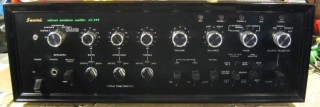 |
| Sansui AU-999, AU-666, AU-777, AU-888 recap/restore – $610 AU-777- $675 The AU-999 is my favorite two channel amp, ever made, of any brand or price. There are a bunch of people on Audiokarma who feel the same way. Audiokarma is a techie Audio newsgroup, with some of the sharpest vintage audio guys I know. There are several design mistakes in the AU-999, not surprising, as it was way back at the beginnings of the solid state amp revolution, and many design issues had to be worked out. Many early amps are this way, but the basic sound of the 999 is so fantastic that a bunch of people on Audiokarma, including me, have put a lot of effort into fixing all the little things that are wrong with it. When made right, it is very clean and musical, with outstanding imaging and detail, and a low end that sounds like it is a DC amp. The changes are many: removing the protection circuit, re-biasing the tone amp stage, adding additional coupling caps to extend the low end, and a mod to the input of the amp section. First and foremost, though, is a complete recap. As is, the amp will only put out about 30 watts per channel before going into serious distortion. All these mods make the full 70 wpc available. The models AU666/777/888 are fairly rare, but have pretty much the same sound quality as the 999. Same price to restore. upgrades/modifications: |
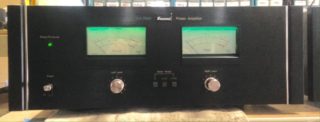
Sansui BA-2000, BA-3000
recap/restore- $875
Often paired with the CA series preamplifiers, these amps feature a toroidal coil winding power transformer, and certainly put out plenty of power. On the BA-3000 we add in-line fuses to rail voltage, as often we see blown output transistors. These models can be hard to to work on due to the board mounting style, but have some of the best looking VU Meters around. That being said, we’ve occasionally seen fried VU meters on BA-3000s, and it’s next to impossible to find replacements.
upgrades/modifications:
Mylar Capacitor Upgrade – $16
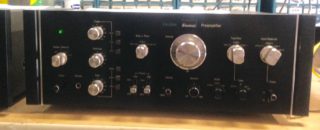
Sansui CA-2000
recap/restore- $710
For those who want control over every aspect of their sound, the CA-2000 preamp offers accurate and extensive tone and amplification adjustments to suit almost any sound desired. Designed to be paired with the BA-2000.
upgrades/modifications:
Mylar Capacitor Upgrade – $56
 |
| Sansui AU-9500 recap/restore – $610 The AU-9500 is the factory upgraded version of the AU-999. The 9500 lacks the Mylar coupling capacitors of the AU-999, which we can add back in, making for a stellar sounding amp. The 9500 is very powerful and probably has the most uncolored, neutral sound of any Sansui, while maintaining the warm and musical nature that is the Sansui signature sound. If that’s what you want, this is the amp. Sansui made a lot of very expensive looking separates and integrateds later on, but none of them can beat this amplifier. upgrades/modifications: |
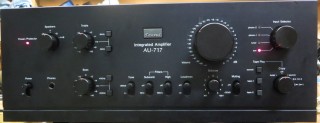 |
| Sansui AU-717 recap/restore – $710 Sansui AU-819 recap/restore- $910 Sansui AU-919 recap/restore – $910 |
|
These are very powerful amps with big expensive caps, and are difficult to work on, with no plug in boards. Worth the effort though, if you want that big sound. The AU-819 and AU-919 cost more because they contain the notorious “Black Flag” polystyrene capacitors, which must be replaced. Additionally, the 919’s oval power supply caps have no direct replacement. The power supply board is mounted on the caps and the 919 diamond differential circuit requires extra alignments. We empty the can and put new caps in, allowing the power supply board to mount normally. upgrades/modifications: |
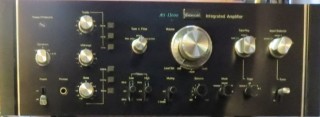 |
| Sansui AU-9900, AU-11000 recap/restore – $975 |
| Sansui AU-20000 recap/restore – $1045 These are large and very beautiful amps. They are also quite difficult to work on, with no plug in boards, and a rewiring nightmare to rebuild the amp section. The 9900 and 11000 cost more than the 20000 because those two models use the large power supply caps as mounting for a PCB. Thus we can only use the caps with screw terminals which are $60 more expensive for four of them. These units are also hard to troubleshoot, as board accessibility is just about nil. We have rebuilt quite a few of them, and they are definitely worth the hassle. Probably some of the best looking amps ever made. upgrades/modifications: |
 |
| Sansui G-9000, G-8000, G-7000, G-6000 recap/restore – $1075 This is probably the most complicated stereo receiver ever made. Some parts, like the big oval caps, have to be replaced with components that do not look the same. Although, we have recently found a procedure to open those caps up and put the new ones inside, for aesthetics. Almost twice the power of the 9090 series. upgrades/modifications: |
 |
| Sansui AU-7700, AU-7900, AU-5500, etc. recap/restore – $575 There are many in this line of mid 70’s amps. They sound very good, and are particularly attractive to look at. They put out way more power than they are rated for. They are somewhat difficult to work on because of the strange method of heat sink mounting. My first Sansui that I rebuilt was an AU-7700. upgrades/modifications: |
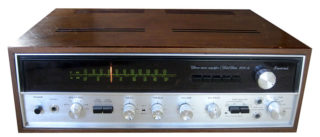 |
| Sansui 5000, 5000A, 5000X recap/restore – $640 These are nice stereo receivers with a DC amp stage. About 55 wpc – these make a good compact amp for a medium room size. The “X” model has two phono inputs, while the others have both a “tape head” and a phono input. We increase the value of the output capacitors to allow for more low-end. When restored, the bass is quite impressive. upgrades/modifications: |
 |
| Sansui Seven, Eight, Eight Deluxe, 7000 recap/restore – $775 The Eight is one of Sansui’s most amazing early receivers. Probably the most overbuilt receiver ever made, and probably the finest receiver from Japan in 1969-70. It is also very difficult to work on. The dial string can take hours, if it gets away from you!! You should talk to us about the big caps. They can be hollowed out and new caps put inside for an original look, very labor intensive, though. This unit has amazing sound. It actually has half of the differential current balance mod already built into the ampflifier section. It’s quite difficult to adjust, but we have simplified the procdure. The amplifier section is practically identical to the AU999 with the same kind of warm and musical sound. Easily 80+ watts per channel, with a very authoritative low end. This was the beginning of Sansui’s domination of the quality receiver market from Japan. upgrades/modifications: |
 |
| Early Sansui Receivers recap/restore – $640 and up These include models such as the 881, 2000, and many others. We have rebuilt practically all of these and the price varies depending on difficulty for us to restore. Send us an email for an estimate. |
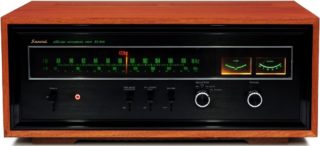 |
| Early Sansui Tuners recap/restore – $275 and up Models include the TU-666, TU-999, TU-7700 and more. Over the years Sansui made several stand-alone tuner models. The restoration on these is fairly straightforward and definitely worth doing if you are having your amp restored. Please email for more details. |
Description
The following mostly applies to the 9001, but will give you an idea of how thorough we are.
Repairs that do not get fixed in the restoration will be mostly done at no charge + the cost of parts. This is because most problems get worked out by us in a few minutes. If you have blown outputs or some other serious problem that takes considerable additional time to repair, we will charge our $100/hr rate + parts.
We change a lot of parts. On the 9001, the most complicated of all these units, we change out over 250 with over 500 solder points addressed, including the two sided board vias… and luckily, we have yet to cause any damage with our mistakes, as we practically always catch them before the unit is powered up.
Recap, restore and align
For a list of the steps we go through when doing a restore, go here.
This is pretty self explanatory. We use Nichicon capacitors, UKW’s and UKT’s in the signal path. Others for power supply functions. These caps sound silky smooth and are just amazing electrolytics for audio. There are a couple places where we add in polypropylene caps, even though that is an additional option to do the whole receiver, the output caps on the CD4 board, for example.
Electrolytic capacitors are the most troublesome parts in vintage audio gear. Here’s my treatise on electrolytic reliability, here.
The four big 10,000μf power supply caps are replaced with four computer grade 15,000μf caps, that have a 50% longer life rating than conventional electrolytics, made by CDE. This ups the total to 60,000μf for an improvement in power supply stiffness.
On the other Receivers and Amps, such as the 9090 and the AU999, we increase the size of the big smoothing caps by approximately 50%. To increase much more than this can put quite a load on the power supply components, especially the transformer, at start up.
We will replace the fusible resistors, remove the blend resistors on the quad boards, do the Holy Grail alignment, set bias and offset on the outputs, do all other adjustments, and clean and lube all the switches and pots, for silent, non scratchy operation. You will have a like new 9001 (in many ways, better) that should last for many years without any maintenance.
The bane of the 9001 is the double sided quad function board. Virtually every 8001/9001 ever made has this problem. 90% of existing units have already failed. If you find one that has all 4 channels working as they should, and not intermittently dropping out, I can pretty much guarantee that with a months worth of use, it will fail also. For a description of the double sided board repair, go here.
We understand that this is a lot of money to invest in your Sansui. One of the points to be made, though, is once this work is done, the value of your unit is increased commensurately. Sansui enthusiasts recognize the value of a restoration/upgrade such as this and prices for restored units, especially if done by us, reflect the work done. Look at it as an investment. The value will not rapidly decrease, the way any new gear bought these days would depreciate.
Differential Amp modifications
Transistor amplifier design was an evolutionary process that occurred from the late 60’s through the end of the 70’s. A lot was learned during that time and a lot since. Most all designs were a copy of the basic topology of the Crown DC300 amplifier released in 1967. One of the big problems with older amps is that the critical input section of the power amp used 5% (or even 10%) parts. Also, a crucial stage in the design was left out. Current flows should be balanced out in the differential input transistors. We do this and actually hand match resistor values to 0.1%.
All this can be done without altering the warm, very musical, and tube like sound of the early Sansui amp. It adds spatial focus and detail to the sound. You can actually hear parts of the music and spatially locate these details, that were seemingly lost before. This modification gives the maximum bang for the buck. If you only have so many dollars to spend, this is highly recommended and will get you more improvement than the poly cap additions.
Technically speaking, measure distortion is reduced by one or two orders of magnitude, or reduced to 0.1 or 0.01 of what it was before, depending on the individual amp. IM distortion products, and dynamic distortion products such as TIM are reduced by the same amount. It is this reduction of the dynamic IM that makes the difference you can immediately hear.
A complete description of how this mod came to be is here.
We can also do this for any QRX x001 Sansui, along with most of the AU units and receivers made before 1980, whether we do other work for you , such as a recap/restore, or not. In many cases you don’t need to send the whole unit, just the output driver boards, which are easily removed. We then install them in one of our units here to do the modification and send it back to you. We can also recap that board and change out fusible resistors, if applicable. You then just reinstall the board(s), and enjoy.
We are so confident you will like this modification that we offer this guarantee. After we do this modification, if you don’t think the modification was worth it, send the driver board(s) back to us and we will return the board to the original configuration and refund your money, no questions asked.
Add 25v regulator
We do this as part of the QRX9001 restoration. It is added protection for the irreplaceable quad boards. The integrated circuits on these boards cannot tolerate much variance and they blow.
Disable 2X power switch
We don’t feel that this is necessary. It is a modification recommended by others, that we see no reason to do. The idea behind it is that an unknowledgeable person might hook up a 4 ohm speaker and then try to run the 9001 in 2X power mode. This is not likely to happen, as this amp is not going to be owned by a neophyte, especially after all this work is done to it. Also, most of these amps have survived 30+ years of use with no damage to the outputs. If you do want to run 8 ohm speakers and double your power, 2X will work well. It spreads the load of high power operation over the entire r channels of heatsink, and will give double the slew rate to boot. If you want the mod, we will do it. It’s very easily done.
Shipping: Shipping this gear around the country is scary. I actually am always in a worry mode until I hear back from a customer that he has gotten the unit we sent him, and that it is in good shape. We had a unit dropped and terminally damaged, some time ago, and it took 5 months to get a settlement, even though it was fully insured.
We’ve started making custom boxes to send your receiver in. You can find more information on our custom boxes here.
If you go to home depot or some of the others, you can buy sheets of 2″ foam, which make great packing material. Here’s some boxes made up using this foam.
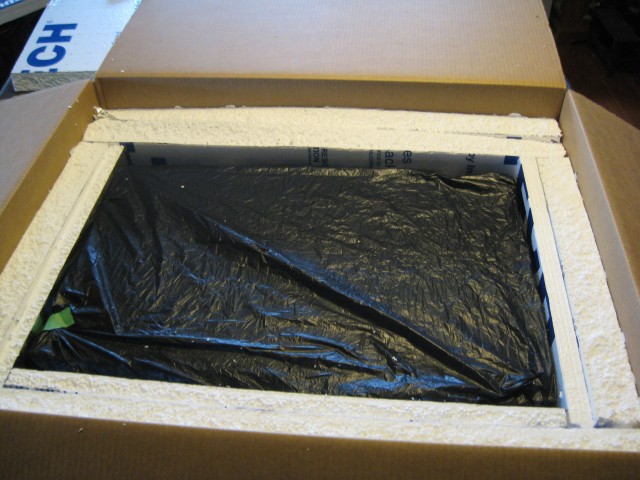
This is a 9001, in a black plastic bag, that we recently sold to Arno, in Ca. It has a 2″ piece of foam on the bottom, and 3″ on the two sides and rear, and 4″ for the front panel. We then insert a 1″ piece of foam on top, as in the following picture:

And then add another 2″ across the top, making the top thickness 3″ like on the sides and rear:
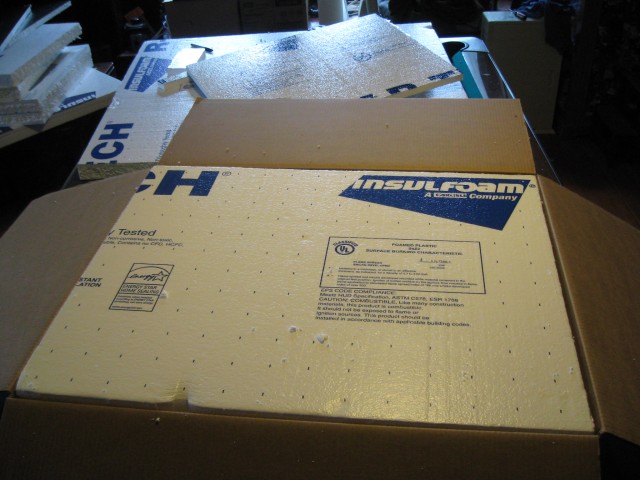
Thanks to Ken in Seattle for the idea for this box. He made his own shipping box out of heavy duty foam like this, and blew us away.
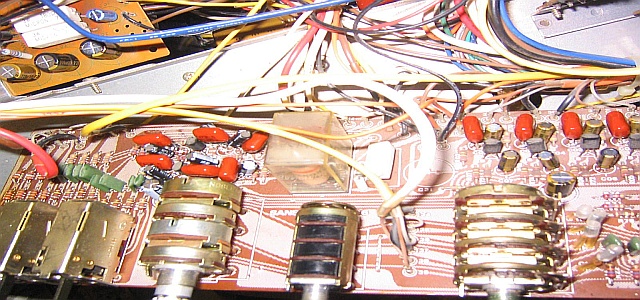
Polypropylenes added to a Volume and Balance board. The poly mod gets more than 40 added to the whole receiver.

